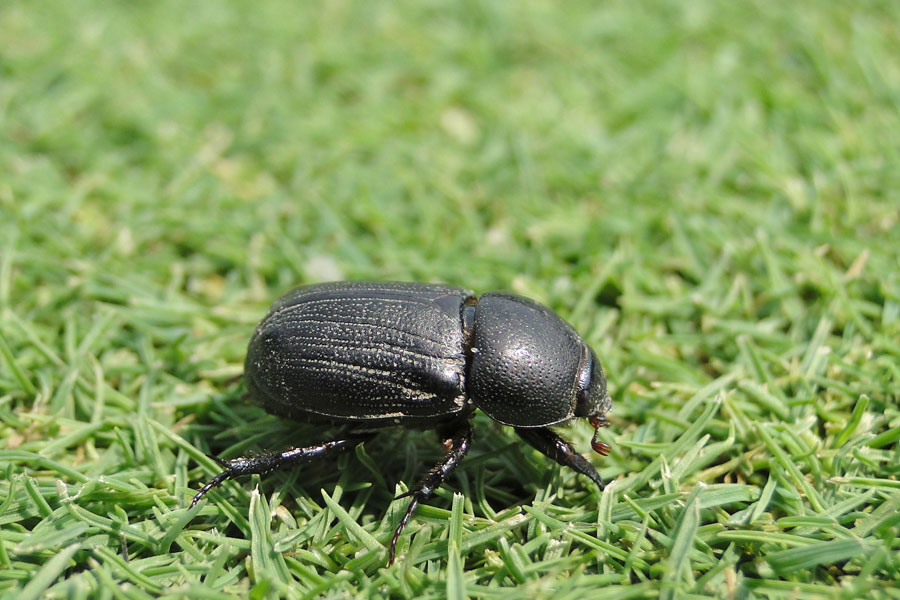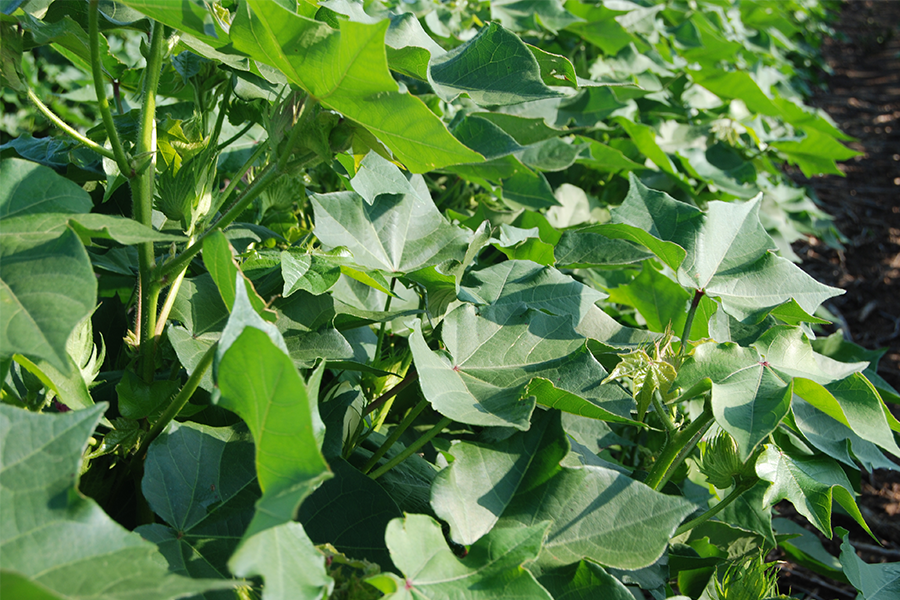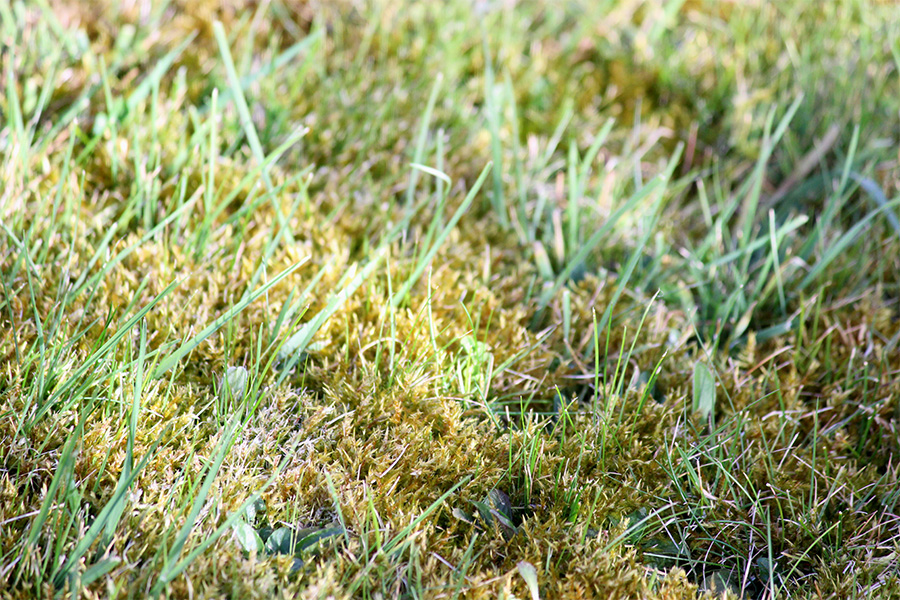Field Crops, Forage and Turfgrass Production
-

Bermudagrass leafspot is a disease that decreases yields, nutritive value and palatability. This publication discusses leafspot diagnosis and management in bermudagrass.
Alfredo Martinez and John Andrae
|
-

The sugarcane beetle has been a significant pest of many crops, including sugarcane, corn, sweet potato, and rice, for more than 100 years. It is a native species commonly found in turfgrass. While low numbers of beetles in an area generally are not regarded as pests, increasing numbers of adult beetles have been causing damage to turfgrass stands throughout the Southeastern U.S.
The adult sugarcane beetle is about ½ in. long, and is black with small punctures along the elytra, or wing covers, that create long, lengthwise stripes. Its first pair of legs have four serrations that make the beetle a strong digger. As a result, adults are known to damage asphalt roofs, door gaskets, and other soft structural elements
when lights attract them to buildings. The larvae of sugarcane beetles are C-shaped grubs, which are similar in appearance to other white grub species. Third-instar larvae can reach up to 1¼ in. long and are identified by their creamy white bodies with reddish-brown head capsules.William Hudson, Freddie Waltz, and Shimat Joseph
|
-

Cotton growth monitoring is vital to producing a healthy crop, making sure that the crop is growing on track, and that there are minimal stresses on the crop. Growth monitoring also can assist in making plant growth regulator (PGR) applications. PGR applications are complex, and many factors play into the decision of when to use them and at what rates. The goal of this publication is to discuss these factors and assist in determining when to make a PGR application.
Phillip Roberts, John Snider, and Lavesta Hand
|
-

This biennial publication contains the proceedings of the turfgrass field day carried out at the UGA Griffin campus every other year; 2022 was the first field day since the 2018 field day because of the COVID-19 pandemic. The guide provides professionals with continuous, real-time access to the latest up-to-date information about turfgrass research studies, products, and turfgrass Extension activities, programs, and outreach. Topics will include, but are not limited to: crop and soil science, agronomy, weed science, plant pathology, entomology, economics, tissue culture, urban agriculture, irrigation, and student posters.
Freddie Waltz, Shimat Joseph, David Jespersen, and Bochra Bahri
|
-

Blister beetles sometimes infest forage crops such as alfalfa, where they may become incorporated in hay. This publication discusses biology, cause of illness and management of blister beetles.
G. Buntin, Dennis Hancock, and Lisa Baxter
|
-

Determining an equitable price for purchased forages is a necessary but often uncomfortable topic of discussion for feed growers and purchasers. Usually this discussion is in the context of corn silage; however, the same principles can be used in any discussion involving hay, baleage or grains. In order for an input market to be efficient, the price agreed upon by both buyers and sellers should adequately compensate the producer while still allowing the purchaser the opportunity to economically use the input.
Jeremy Kichler and R. Lacy
|
-

Occasionally, turfgrass areas begin to thin out and moss and algae start to form. These primitive plants develop because conditions for growing dense, healthy turf have declined. This publication gives you preventive practices and chemical suppression tips for controlling moss and algae in turf.
Timothy Daly and Patrick McCullough
|
-

Variety selection is one of the biggest decisions and investments cotton growers make each year. In 2010, the UGA Extension Cotton Agronomists implemented the UGA On-Farm Cotton Variety Evaluation Program to assist in this decision. Varieties are evaluated across a wide range of environments in the cotton producing regions of Georgia in cooperation with county agents and industry partners. The implementation of this program has made a tremendous impact on variety selection from year to year, and it will continue to have the same impact in the future.
R. Black, John Elsner, Robert Rogers, Lavesta Hand, and Chandler Rowe
|
-

This publication is a monthly guide for professional managers of commercial, recreational, municipal, institutional or private grounds in Georgia.
Gil Landry, Michael Toews, Paul Thomas, Svoboda Pennisi, Timothy Murphy, and Beverly Sparks
|